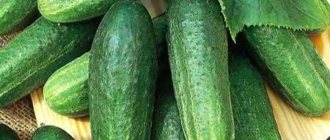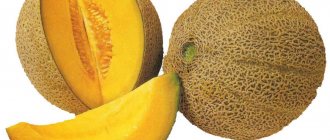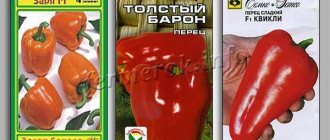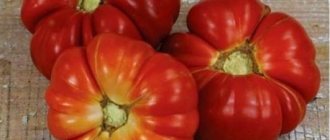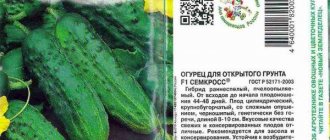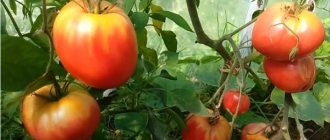Every gardener dreams of growing a tomato that will require minimal care and produce delicious, juicy fruits. Modern selection provides such an opportunity. There are many varieties and hybrids on sale that have increased resistance to adverse environmental factors.
Such crops include the Bourgeois tomato. It is not afraid of cold weather and can withstand drought. It is easy to grow even in the countryside. What else is attractive about this hybrid - read on.
General description of the variety
Bourgeois f1 is a first generation tomato hybrid . It was developed by crossing two other varieties. This makes it impossible to sow seeds from your own harvest. The hybrid was bred by Ukrainian breeders in Odessa. In 2004 it was included in the Russian state register.
Recommended for outdoor cultivation in central and southern regions.
Distinctive features of Bourgeois
A distinctive feature of Bourgeois is its resistance to temperature changes. It is not afraid of either heat or cold weather and sets fruit well under negative environmental influences.
The hybrid tolerates short-term drought . This makes it easier to care for, especially when growing for the dacha.
It is highly resistant to diseases of nightshade crops. Rarely suffers from late blight. Due to the tomato's resistance to negative environmental factors, it grows equally well in indoor and outdoor ground. The location of cultivation does not affect the yield.
The fruits are medium sized, red in color . The taste is rich, sweet and sour. The aroma is pronounced tomato.
One of the negative features of the hybrid is the fragility of the stems. Despite the short stature of Bourgeois, his bushes need garter.
Main characteristics
Bourgeois refers to tomatoes that are guaranteed to give a good harvest . This is one of the most unpretentious hybrids that will tolerate even a short absence of care.
Description and characteristics:
| Parameter | Indicators |
| Bush type | Determinant. Height varies between 75-130 cm (the warmer the region, the higher the bush will grow). Refers to standard crops. The leaves are ordinary, medium in size, bright green. The bushes are medium-leaved, branched. The stems are fragile. The inflorescences are simple, the first is formed in the axil of 5-6 leaves, the next ones - through each leaf. The fruits are formed in clusters of 5-7 pieces. |
| Growing method | The tomato is cold-resistant. In the southern and central regions it is grown in open ground. In northern latitudes they are planted in film or glass unheated greenhouses. |
| Productivity | High. From 1 sq. m harvest up to 12 kg of fruit. |
| Fruit | Medium size. The weight of the fruit varies between 150-300 g. The color is red inside and outside. There is no green spot at the base. The shape is leveled, round. All fruits on the bush are almost the same size. There is faint ribbing at the base. The taste is sweet and sour with a characteristic tomato aroma. The pulp is dense but juicy. Each fruit contains 3-4 chambers with seeds that are unsuitable for planting. |
| Transportability | High. The harvest does not deteriorate when transported over long distances. Differs in shelf life (more than 1 month). |
| Ripening time | Mid-season. The first tomatoes turn red 100-110 days after sowing the seeds. |
| Disease resistance | It is highly resistant to tomato diseases. Not afraid of late blight. |
Some techniques for caring for tomatoes Bourgeois F 1
After the seeds have been purchased, they begin to be prepared for planting. To begin with, they are sorted out: small and ugly grains are removed. Dilute a pink solution of potassium permanganate. The selected seeds are placed on a cloth, placed in a bag and dipped into the solution for 5-10 minutes. Grains treated with potassium permanganate are washed with water.
A damp cloth is placed on a pallet with sides at least 3 centimeters high. You can fold the gauze in several layers. The fabric is soaked in a solution of potassium humate or any other fertilizer that stimulates plant growth. Seeds are placed on a cloth moistened with fertilizer, covered with film and left for several days at room temperature. After a couple of days, the seeds germinate and are ready to be transplanted into the ground.
Wooden boxes or plastic containers are suitable for growing seedlings. The boxes are filled with earth. Calcium must be added to the soil - crushed chalk or eggshells. Tomatoes grow well in porous soil, so add a little dry river sand and humus.
The seeds are lowered into the ground to a shallow depth and moisten the soil. During cultivation, seedlings are provided with regular watering. In addition to watering, boxes with tomatoes are placed closer to the light source.
A month after planting, the seedlings are plucked. Picking is carried out at will and is not a mandatory item to perform. The procedure is carried out to slow down the growth and elongation of seedlings. Dive plants with 4-6 leaves from moist soil into separate containers of larger diameter. There is no need to completely separate the soil from the roots. After picking, the tomatoes are spilled with diluted sodium humate.
Planting tomatoes in the greenhouse begins in early May. Tomatoes take root well in acidified soil with pH = 6-6.5.
The glasses are lowered into a bucket with dissolved mullein or chicken droppings. The wet soil with the plant is removed from the glass and lowered into the dug hole. After replanting, mulch the soil a little with sawdust. Mulching protects the soil from waterlogging; sawdust instantly absorbs excess water and then dries out. Moreover, air exchange improves and the roots are provided with constant access to oxygen.
When the bush reaches a height of 35-40 centimeters, it is tied up. In the greenhouse, the garter is tied to the trellis. For cultivation in open ground, pegs 70-90 centimeters long are used. The garter reduces the formation of stepsons and allows the young plant to fully develop.
Water the tomatoes regularly. The frequency of watering depends on the outside air temperature. During drought, water tomatoes once every two days. If the weather is rainy outside, then once a week is enough.
For abundant growth, tomatoes are sprayed with infusions of onions and chicken manure. The tinctures are prepared simply: 3 chopped onions or 200 grams of chicken manure, pour a bucket of water and leave for 2 days. The mixture is then filtered and the tomato stem and leaves are sprayed once every ten days. With regular spraying, the likelihood of getting sick decreases and the protective properties increase.
Tomato Bourgeois needs a mandatory garter. If there are large fruits or an abundance of harvest, the branches are strengthened separately. The bush is formed into 2–3 stems.
Tomato Bourgeois responds gratefully to complex feeding. Before planting, the seeds do not need to be soaked in potassium permanganate. When grown by seedlings, before planting in open ground, it is necessary to harden the tomatoes, which lasts an average of 1 week.
Despite its high resistance to diseases, Bourgeois requires a certain set of preventive measures. It is necessary to loosen the soil, weed, take care of timely watering and good lighting of the plants. To prevent the fight against ticks and slugs, it is recommended to treat tomatoes with soapy water and Bordeaux mixture.
- The first hilling is carried out 9-11 days after planting, having moistened the soil in advance. The second time they hill up 2-3 weeks after the first. Thanks to the procedure, new roots grow at the base of the stem;
- A tomato needs enough moisture. It is advisable to water in the evening or on a cloudy day. The soil needs to be moistened as soon as it begins to dry out, and also before fertilizing;
- To prevent crust formation, the soil must be loosened after each watering, every two weeks. Weeding allows you to get rid of weeds;
- Despite excellent immunity, you should not neglect preventive spraying using fungicidal preparations and manganese solution;
- The first feeding is carried out two weeks after planting. To prepare the nutrient mixture you will need 10 liters of mullein solution and 20 g of superphosphate. This is enough to feed 10 bushes. Subsequently, they are fed once every two weeks. For 1 m2 you will need 20 g of superphosphate, 10 g of ammonium nitrate and 15 g of potassium salt. During the season, 3-4 fertilizing is carried out with complex fertilizer;
- The bushes need to be tied up, and the branches need reliable supports that prevent them from breaking off. The formation of a bush is carried out in 2-3 stems, in most cases three.
We invite you to familiarize yourself with the Chicken egg heals the lungs and stomach. — bbel2004 — LiveJournal
In the 17th century, Europeans received tomato seeds from America for their use. At first, the plant was considered decorative. They did not eat tomatoes; in the temperate climates of some countries they did not have time to ripen in open ground.
However, in more southern countries such as Italy, the plants had enough sun and warmth to mature. Italians were among the first to eat tomatoes. In countries with a temperate climate, tomatoes began to be grown for food after the Russian scientist A. T. Bolotov introduced the seedling method of planting tomatoes and ripening the fruits.
Since that time, tomatoes have been grown for food everywhere. Currently, the number of tomato varieties and hybrids is in the hundreds. One of the fairly new varieties is the bourgeois tomato; we will try to find out about its advantages and disadvantages.
The bourgeois tomato is a hybrid with an average ripening period, which was obtained in 2003. On the 110th – 115th day after the seeds of the bourgeois variety, sown as seedlings, germinate, the fruit begins to ripen. The hybrid has quite powerful and strong shoots up to 0.8 - 0.9 meters high.
The fruits are quite large. Their average weight reaches 0.3 kg. If agricultural practices are followed, fruits weighing 0.4 kg are not uncommon. The shape of the tomatoes is round, slightly flattened. The color is red. The skin is smooth, with a glossy sheen. The pulp is dense, fleshy. The main purpose is fresh consumption, use in vegetable salads.
Bourgeois tomatoes have a fairly high yield. Up to 90 tons can be harvested from one hectare, and under favorable conditions the yield increases to 120 tons. Bourgeois tomatoes ripen well when the fruits are picked green. The hybrid can be recommended for industrial professional cultivation, as well as for personal and small farms.
The advantages of the variety are:
- friendly harvest return
- long fruiting period
- excellent taste
- attractive presentation
- good shelf life up to 45 days without loss of quality
- tolerance to long distance transportation
Growing bourgeois tomatoes has much in common with growing other varieties of tomatoes, but there are several agricultural techniques that will help you get a good harvest of these tomatoes.
You should not plant tomatoes if potatoes, peppers, eggplants, and physalis grew on the plot in the previous three to four years. When digging, you need to add organic fertilizers. One bucket of rotted manure per square meter is enough. meter. Organic substances are added in accordance with the instructions for them.
Today, many gardeners consider the Finnish-made Kemira station wagon to be one of the best fertilizers for bourgeois tomatoes. It can also be used for liquid feeding during the period of growth and flowering of tomatoes. Like all tomatoes, the bushes of the Bourgeois hybrid are responsive to hilling and loosening the soil.
In order for the tomatoes to be especially large, part of the ovary on the grapes must be removed. Considering that the hybrid is one of the most resistant to blossom end and root rot, verticillium, there are no particular problems with growing these tomatoes.
However, in more southern countries such as Italy, the plants had enough sun and warmth to mature. Italians were among the first to eat tomatoes. In countries with a temperate climate, tomatoes began to be grown for food after the Russian scientist A. T. Bolotov introduced the seedling method of planting tomatoes and ripening the fruits.
History of the Azhur tomato
The author of the hybrid is a well-known agro. Its founders began their activities in 1995 with the sale of tomato seeds. Today the company's product range includes regionalized varieties and hybrids of peppers, potatoes, cucumbers, zucchini and many other crops. There are more than 570 of them in the State Register of Breeding Achievements.
For his work, he selects plastic varieties that can delight with a rich harvest in any light zone of the Russian Federation and under different growing conditions. This also applies to the Azhur tomato. The hybrid was entered into the State Register in 2007 with permission for cultivation in all regions of Russia.
Description of the variety
This is a determinate tomato, the growth of its main stem is limited (topped) at a height of 80–100 cm. The stem is powerful, the internodes are short, the racemes are located every 1–2 leaves. From the emergence of seedlings to the collection of the first ripe fruits, 105–110 days pass.
Tomatoes are round, slightly flattened. Unripe ones do not have a dark green spot on the stalk. Ripe fruits are colored red-crimson.
The skin is dense, the tomatoes do not crack, do not suffer from blossom end rot, tolerate long-distance transportation well, and are stored refrigerated for 2–3 months.
Since that time, tomatoes have been grown for food everywhere. Currently, the number of tomato varieties and hybrids is in the hundreds. One of the fairly new varieties is the bourgeois tomato; we will try to find out about its advantages and disadvantages.
Growing seedlings
Like other mid-season hybrids, Bourgeois in our country is grown exclusively by seedlings. Seeds are sown in the ground 45-60 days before the intended planting in a permanent place.
The time for sowing planting material depends on the climate of the region:
- southern - at the end of February or beginning of March;
- moderate - in the second half of March;
- northern - in early April.
How to prepare seeds for planting
Many manufacturers process their products in factories. Prepared seeds are usually colored orange or green . Etching information is indicated on the packaging. If untreated seed is used, disinfection is necessary. Without it, the risks of plant infection and death due to negative environmental conditions increase.
Seeds must be disinfected . Compositions in which they are soaked:
- solution of potassium permanganate (1 g per 100 ml of water);
- copper sulfate (1 g per 1 liter of water);
- phytosporin (2 drops per 1 cup of water);
- aloe juice (diluted with water 1:1);
- soda solution (1 tsp per 1 cup of water);
- hydrogen peroxide.
Note! Soda solution and aloe juice not only disinfect planting material, but also have growth stimulating properties.
Before dressing, the seeds are soaked in a glass of water.
Floated specimens will not germinate. Before planting, seeds are treated with growth stimulants.
There are several options for accelerating the germination of planting material :
- soaking in purchased products (“Epin”, “Zircon”, “Sodium Humate”);
- soaking in homemade products (honey water, which is prepared from 1 teaspoon of honey and 1 cup of water);
- preliminary germination in damp cloth.
Other varieties of tomatoes:
Early rich harvest - Polbig tomato
Large-fruited and early-ripening hybrid "Strega f1"
A productive hybrid with excellent taste - Florida tomato
What containers and soil to choose
Light but nutritious soil is suitable for tomatoes . It is prepared from a base and nutrient substrate taken in equal proportions. Add ½ baking powder to the resulting mixture. Compound:
- base - garden soil, peat, black soil;
- nutrient substrate - humus;
- baking powder - sand, sawdust, shredded coconut.
Ash (1 tbsp per 10 l) and superphosphate (1 matchbox per 10 l) are added to the soil Ready-made soil mixtures are also sold in gardening stores. Choose a special soil for tomatoes and peppers or a universal soil.
Tomato seeds are usually sown in a common box . After the seedlings have grown, they are planted in individual containers with a volume of at least 300 ml. Containers and soil must be disinfected. A dark pink solution of potassium permanganate is most often used.
Sowing seeds
Bourgeois is an inexpensive hybrid that tolerates picks well . Soil is poured into the boxes. When it warms up, water it with warm water. Prepare grooves 1 cm deep. Seeds are sown in them at a distance of 3 cm from each other. Then all the depressions are covered with earth.
Boxes with planting material are covered with film . They are placed in a room with a temperature of 23-26 °C. In such conditions, the seeds will germinate quickly.
Rules for caring for seedlings
Tomato seedlings need regular care. There are several basic rules for growing this crop :
- When shoots appear, the film is removed. The boxes are moved for a week to a place with a temperature of 17 °C. This will prevent the tomatoes from pulling out prematurely.
- Tomatoes are brought into a room with a temperature of 20-22 °C.
- As the top layer of soil dries, the seedlings are watered. Use settled water. Water tomatoes only at the root.
- When two true leaves form on the plants, they are transplanted into separate containers, carefully holding them by the leaves. Drainage is placed at the bottom of the pots, which will protect the plants from blackleg. After picking, water the tomatoes. After this, the soil is not moistened for 10 days.
- During the entire period of growing seedlings, they are fed 3 times. The first time, a solution of ash and superphosphate is added (for 5 liters of water, take 10 tablespoons of ash and 1 teaspoon of superphosphate). The second time, chicken manure is used, diluted 1:10. Phosphorus-potassium fertilizing is applied for the last time.
- 10 days before planting tomatoes in the ground, seedlings begin to harden. It is taken outside during the warm part of the day, increasing the time of stay daily.
Tomato seedlings: from germination to picking
Pests and diseases
Tomato Bourgeois is characterized by high resistance to the most common diseases. It is rarely affected by crown and root rot and verticillium wilt. Of the pests, tomatoes are most often attacked by slugs, the Colorado potato beetle and spider mites.
For preventive purposes, bushes are treated with Bordeaux mixture. To combat spider mites, use a soap solution, which is used to treat all parts of the plant. To prevent the Colorado potato beetle from settling on Bourgeois tomatoes, they are sprayed with an insecticide, such as Prestige. It not only protects tomatoes from harmful insects, but also has antifungal properties.
Metaldehyde or copper sulfate is used to kill slugs.
An effective remedy is a mixture of slaked lime and wood ash in a ratio of 1:4. Tomatoes can be treated with tobacco dust. Late in the evening, when the slugs crawl out of their hiding places, they are collected by hand and destroyed. On a note! It is necessary to regularly loosen the beds, because... pests settle in the moist top layer of soil and lay eggs there.
Agricultural technology Bourgeois
Bourgeois is planted in a permanent place when the seedlings have become stronger and the soil temperature at a depth of 12 cm reaches 15 °C.
Exact drop-off times vary by region:
- cities with a warm climate - end of April;
- regions with a temperate climate - the second ten days of May;
- northern regions – early June.
Bourgeois is grown in open and closed ground. In both cases, yield indicators are stable .
Picking to a permanent place
For tomatoes, choose a place in the sunniest part of the garden. Groundwater should not be located too close to the surface of the earth.
The beds are prepared in the fall . They are dug up, cleared of plant debris and mixed with humus. For 1 sq. m, 6 kg of fertilizers are applied. In spring, the beds are leveled with a rake and cleared of weeds. The soil is watered with hot copper sulfate.
Advice! Tomatoes grow well on their own tops. In the fall, tomato bushes are picked, crushed and watered with a solution of potassium permanganate. The grass is then buried in the beds where the tomatoes will grow next year.
The holes are dug in rows in a checkerboard pattern. For 1 sq. m fits 4-5 plants. 1 tbsp is poured into the holes. l. land. Some gardeners believe that it is useful to place 1 small fish in the recesses for tomatoes. Before planting, the seedlings are carefully removed from the pots. They are planted together with a lump of earth. The depressions are covered with earth and watered with warm water, spending 1 liter of water on each plant.
Basic rules of care
It is recommended to tie up the bourgeois . Despite the fact that it belongs to determinate hybrids, its bushes are tall and its stems are brittle. Therefore, it is necessary to tie up not only the main stem, but also heavy clusters with fruits.
The bush does not need to be formed . Its productivity is ensured precisely by its spreading nature. It is recommended to regularly remove leaves at the bottom of the leaf. The procedure is carried out once a week, removing no more than 3 leaves.
Water the tomatoes 2 times a week , using 3 liters of warm water per plant. After each watering, the soil is loosened and weeds are removed.
Tomato beds are mulched with rotted straw, hay or humus. This layer will protect the roots of the plants from unfavorable environmental factors and will serve as additional feeding.
Fertilizers are applied 3-4 times per season (depending on the composition of the soil). The intervals between feedings are at least 2 weeks.
Planting and care
To get a decent harvest, seedlings are grown from quality seeds, following the rules.
Sowing seeds for seedlings
Seeds are sown in the 1st-2nd decade of March. They are first soaked for 10 minutes in 1% potassium permanganate, then washed. Leave to germinate in a damp, breathable cloth for 5 days until sprouts appear.
Planting seedlings
- Seeds are sown to a depth of 1.5 cm, the width between the seeds is 2 cm.
- Cover the containers with film and put them in a warm place until germination.
Features of care
Seedlings are grown at a temperature of 22-24 °C. Care includes several points.
- Light with phytolamps until the daylight hours are 10-12 hours.
- Irrigate with warm water through a spray bottle.
- They dive when there are 3 true leaves.
- Harden at 15 °C for a week.
The main nuances of cultivation in open and protected ground
Bourgeois is equally easy to grow in open and protected ground .
When choosing one of the methods, consider some nuances. Air circulates indoors worse than outside. This contributes to the spread of infections in the greenhouse and stagnation of moisture . To avoid such problems, the room is regularly ventilated. To protect the premises from pests, the windows are covered with mesh.
Tomatoes in the greenhouse are watered only once a week. Liquid from indoor beds evaporates more slowly.
Before planting seedlings in a greenhouse, it is recommended to spray the walls with copper sulfate . The soil in the beds where tomatoes previously grew is replaced with new soil.
In open ground, it is important to protect plants from night frosts. To do this, they are covered with film every evening for the first 2 weeks.
Advantages and disadvantages of Bourgeois
Benefits of culture:
- resistance to temperature changes;
- tolerates dry weather;
- ease of care:
- wonderful taste of fruits;
- versatility of crop application;
- high productivity;
- high immunity to tomato diseases;
- does not require pinching.
Disadvantage : since this is a hybrid and not a variety, seeds from its fruits are not used for planting.
Farmer reviews
Feedback from farmers about Bourgeois is mostly positive . This tomato will satisfy the requirements of beginners and experienced gardeners.
Irina, Omsk : “I liked Bourgeois because it was easy to care for. Even in cool climates it grows well in a greenhouse. Requires minimal maintenance. Not sick. The fruits are delicious. Smooth and red, just like in the photo.”
Victoria, Zheleznogorsk : “I grow bourgeois at the dacha in open ground. I can’t say that its fruits are incredibly tasty. They are good with a classic tomato flavor. His endurance is impressive. I go to the dacha once a week. I add fertilizers (silage, superphosphate, ammonium nitrate) 2 times a season and water them once every 7 days. The tomato does not require pinching. You need to tie it up."
Application of fruits
The fruits of this variety are red in color when ripe, and their weight reaches 200 grams. The first specimen when ripe can reach a weight of up to 0.5 kilograms. The shape of the tomato is round, the fruits are characterized by very dense and fleshy pulp.
Bourgeois tomatoes have about 6 seed chambers, their dry matter content is about 6%. The fruits are very well preserved and can easily withstand transportation over long distances. The harvested crop is suitable for:
- fresh consumption;
- barrel salting;
- whole fruit canning;
- all types of processing (including juice production).




